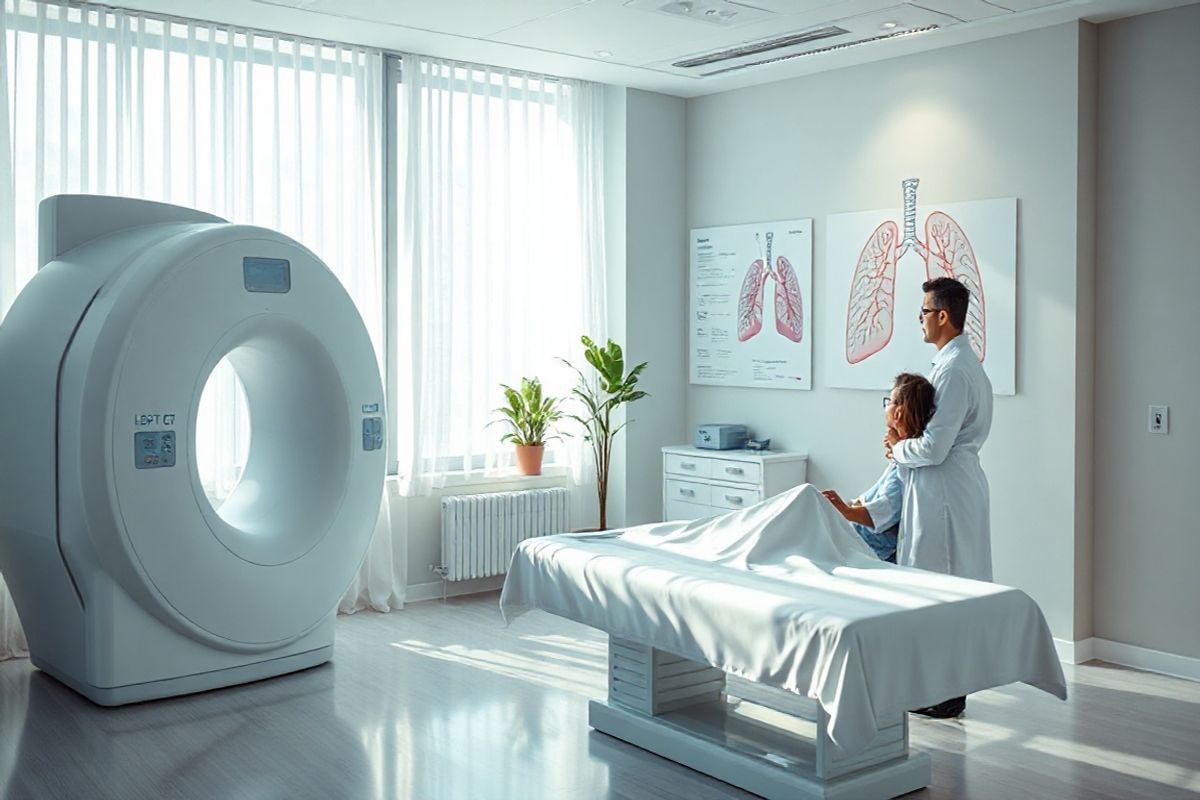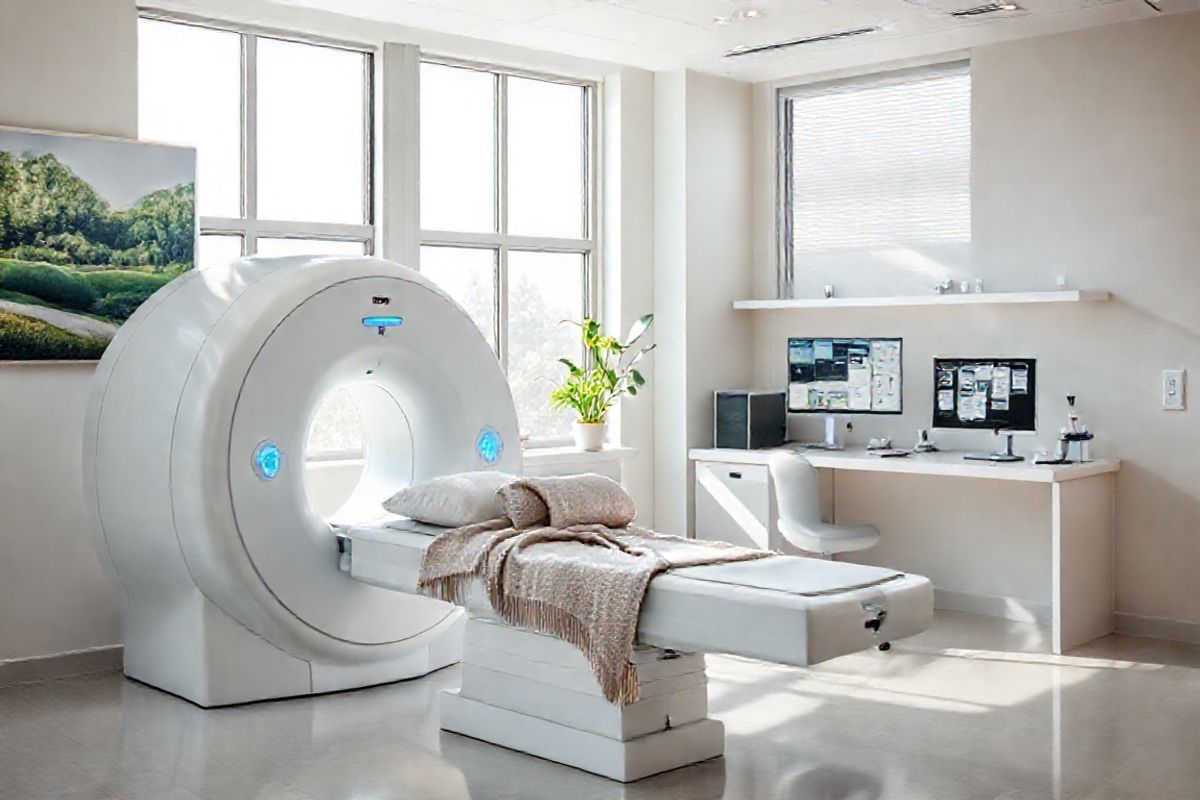Table of Contents
Understanding Lung Cancer Screening: Importance and Recommendations

Lung cancer remains one of the leading causes of cancer-related deaths in the United States, highlighting the critical necessity for early detection and intervention. The American Cancer Society recommends yearly screening for lung cancer with a low-dose CT (LDCT) scan for individuals aged 50 to 80 who have a significant smoking history, defined as a 20-pack year history of smoking (American Cancer Society, n.d.). A pack-year is calculated as smoking one pack (20 cigarettes) daily for one year. For instance, a person could qualify by smoking one pack a day for 20 years or two packs a day for 10 years.
Lung cancer screening is essential because it can detect cancer at an earlier stage, when treatment options are more effective, thus potentially reducing mortality rates. Research indicates that timely screening can significantly lower the risk of dying from lung cancer, making it a vital component of public health efforts (Cleveland Clinic, n.d.). However, individuals should first consult with healthcare professionals to discuss the benefits, limitations, and potential risks of screening, especially if they have existing health conditions that might complicate treatment options.
Who Qualifies for Medicare Coverage of Lung Cancer Screenings?
medicare provides coverage for lung cancer screening specifically for those who meet certain criteria. According to the Centers for Medicare & Medicaid Services (CMS), eligibility for Medicare coverage of lung cancer screenings is primarily based on age, smoking history, and current health status. Individuals must be aged 50 to 80 years, have a history of smoking that amounts to at least 20 pack-years, and either be current smokers or have quit within the past 15 years (Cleveland Clinic, n.d.).
Additionally, patients should be asymptomatic, meaning they do not exhibit any signs or symptoms of lung cancer. If an individual presents with symptoms, diagnostic testing rather than screening may be warranted. This distinction is crucial as it influences the type of coverage that Medicare will provide. Medicare’s lung cancer screening benefit is designed to ensure that high-risk individuals receive the necessary preventive care while also managing costs related to more extensive diagnostic evaluations.
Key Factors Influencing Medicare Eligibility for Lung Cancer Screening
Several factors determine eligibility for Medicare coverage of lung cancer screenings. These include:
- Age: The individual must be between 50 and 80 years old.
- Smoking History: A minimum of a 20-pack year smoking history is required. This calculation considers both the duration of smoking and the quantity smoked per day.
- Current Smoking Status: Eligible individuals must either currently smoke or have quit within the past 15 years.
- Health Status: Individuals with serious health issues that may limit their life expectancy or who would not seek treatment if diagnosed with lung cancer are generally excluded from the screening benefit (American Cancer Society, n.d.).
These criteria are significant in ensuring that Medicare funds are allocated effectively and that individuals who are most likely to benefit from early detection receive access to screening.
Cost Breakdown: What to Expect with Medicare Coverage for Lung Cancer Screenings

Understanding the financial implications of lung cancer screenings is essential for patients considering this preventive measure. Under Medicare, lung cancer screening with LDCT is covered under Part B, which is different from hospital coverage under Part A.
Coverage Details
- Frequency: Medicare covers one LDCT scan per year for eligible individuals.
- Cost Sharing: While Medicare covers the cost of the screening, patients are typically responsible for a portion of the costs. This may include a copayment, which can vary based on the specific Medicare plan they have.
- No Deductible: For lung cancer screening, there is no deductible if the screening is performed in a facility that participates in the program. If the patient is treated in a non-participating facility, higher out-of-pocket expenses may apply.
Potential Additional Costs
If the LDCT scan detects abnormalities, further diagnostic tests may be necessary, which are not covered under the initial screening benefit. These subsequent tests can include biopsies or additional imaging studies, and costs for these services can add up quickly, depending on the patient’s insurance plan and coverage details.
Patients should consult their Medicare provider or healthcare team to discuss potential costs and what to expect financially. Understanding these elements can help individuals make informed decisions regarding their lung cancer screening options.
Resources and Support for Patients Seeking Lung Cancer Screening Through Medicare
Navigating the complexities of Medicare and lung cancer screening can be daunting, but various resources are available to assist patients:
- Medicare Official Website: The official Medicare website provides comprehensive information regarding coverage, eligibility, and costs associated with lung cancer screening.
- Local Health Departments: Many local health departments offer resources and support for cancer screening programs, including information on eligibility and how to access screenings.
- Patient Advocacy Organizations: Organizations such as the American Cancer Society offer guidance, educational materials, and support for patients navigating lung cancer screenings and treatment options.
- Healthcare Providers: Primary care physicians and specialists can provide personalized advice and support, helping patients understand their options and the steps necessary to access screenings.
By utilizing these resources, patients can better understand their eligibility for Medicare coverage and make informed decisions about lung cancer screenings.
Frequently Asked Questions (FAQs)
1. What is a low-dose CT scan (LDCT)? A low-dose CT scan (LDCT) is a specialized imaging test that uses low doses of radiation to create detailed images of the lungs. It is specifically designed for lung cancer screening in high-risk individuals.
2. How often should I get screened for lung cancer if I qualify? If you meet the eligibility criteria for lung cancer screening, it is recommended to have an LDCT scan every year.
3. Are there any risks associated with lung cancer screening? While LDCT scans are generally safe, they expose patients to a small amount of radiation. Additionally, the screening may lead to false positives, requiring further testing and potentially causing anxiety.
4. How can I find out if I am eligible for Medicare coverage for lung cancer screening? You can check your eligibility by visiting the Medicare website, contacting your insurance provider, or speaking with your healthcare provider.
5. What should I do if my LDCT scan shows abnormalities? If your LDCT scan reveals any abnormalities, your healthcare provider will likely recommend follow-up tests, such as additional imaging or a biopsy, to determine the nature of the findings.
References
-
American Cancer Society. (n.d.). Lung Cancer Screening Guidelines. Retrieved from https://www.cancer.org/health-care-professionals/american-cancer-society-prevention-early-detection-guidelines/lung-cancer-screening-guidelines.html
-
Cleveland Clinic. (n.d.). Lung Cancer Screening: Purpose, Procedure & Results. Retrieved from https://my.clevelandclinic.org/health/diagnostics/15031-lung-cancer-screening
-
Centers for Medicare & Medicaid Services. (n.d.). What Is the Age for Medicare Eligibility? Retrieved from https://www.investopedia.com/articles/personal-finance/123014/what-age-medicare-elegibility.asp
-
Enhancing representativeness of patient-reported outcomes in routine radiation oncology care: a quality improvement protocol to address non-response. (2024). BMJ Open. Retrieved from https://doi.org/10.1136/bmjopen-2024-097127
-
Effect of pharmacist care on clinical outcomes and therapy optimization in perioperative settings: A systematic review. (2024). American Journal of Health-System Pharmacy. Retrieved from https://pubmed.ncbi.nlm.nih.gov/11648731/









